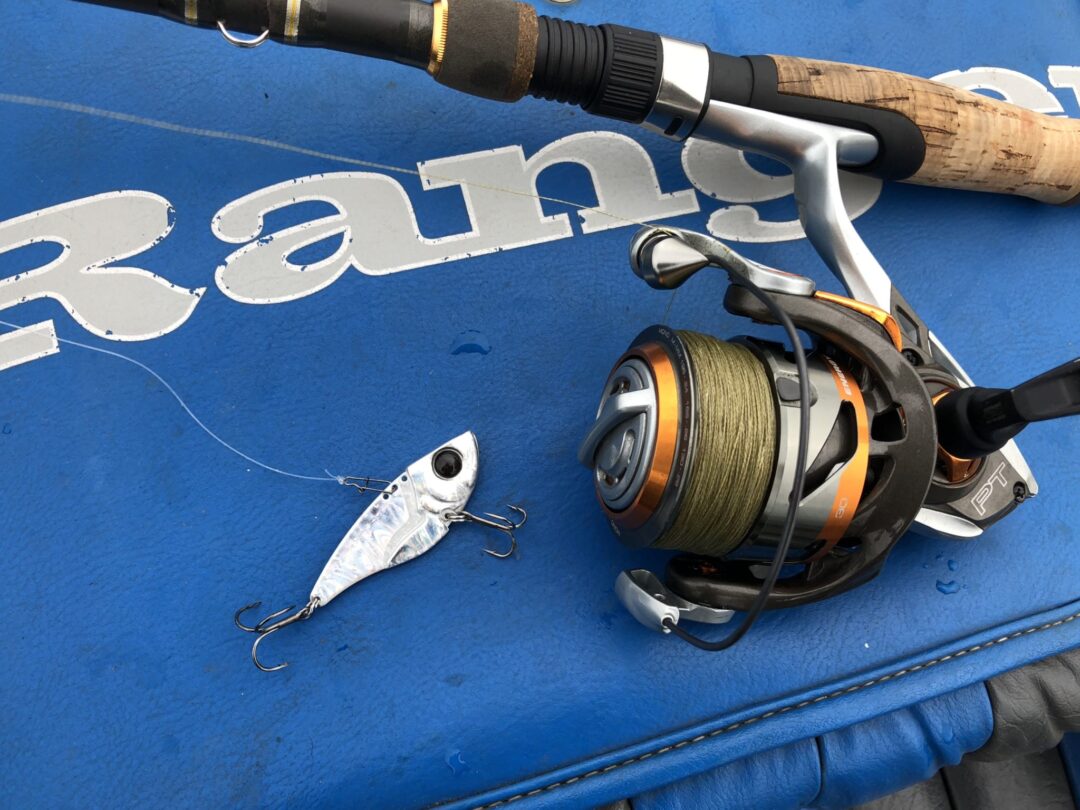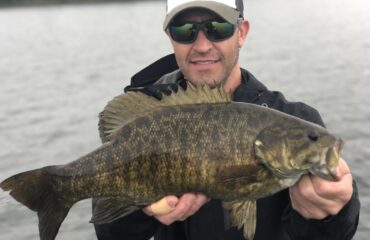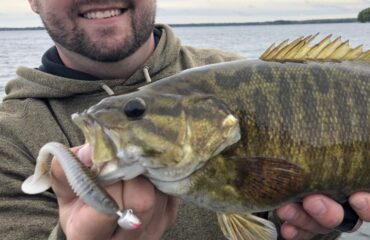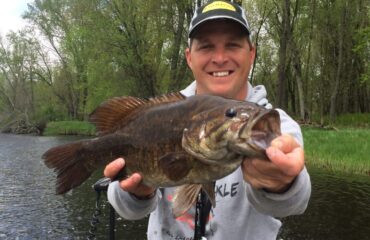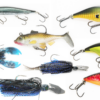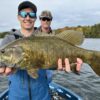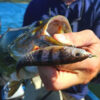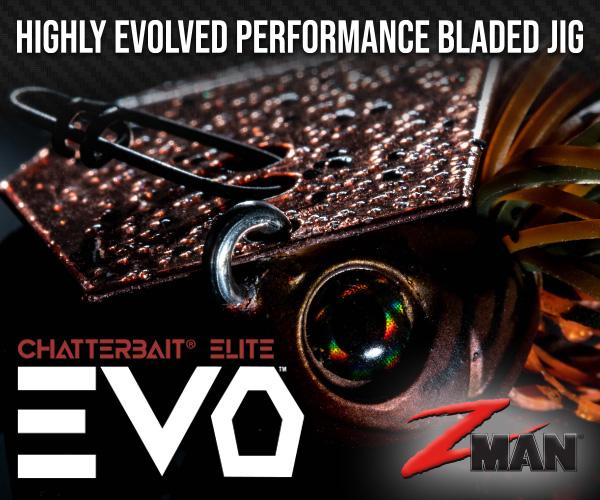Vertical Jigging for Fall Smallmouth
By Andrew Ragas
Fall fishing success is usually determined by location rather than presentation. Lake smallmouth are deep structurally oriented fish in fall. By now 90% of the entire lake’s bass population is living in 10% of the lake, in and around wintering locations. The best peak period of autumn occurs after the completion of turnover when fish have moved into wintering areas, making them concentrated, easier to locate and catch.
Years of trial and error, knowing my lake’s bass fishery history, and experience idling around lakes with my Lowrance HDS units has helped me identify and find these wintering bass communities. Identifying deep structure and likely wintering locations with updated Navionics lake charts, and marking schools of smallmouth on side imaging, down imaging, fish reveal, and chirp sonar has enabled me to pursue them deep into the fall season. Our electronics doesn’t lie. Knowing how to interpret fish marks and the lake bottom pays off.
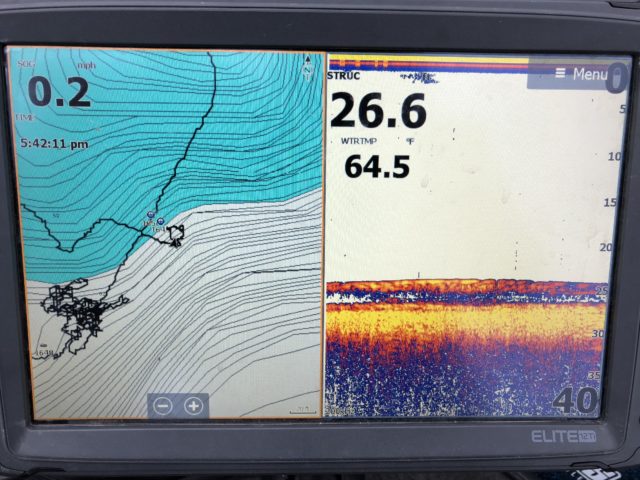
Position Fishing – Park and Mark
Autumn season smallmouth are best approached by position fishing and vertical presentation. Down deep, active smallmouth hover a foot or two off the bottom and appear as wide yellow and orange lines. Fish that suspend are moving and catchable. Multiple fish can appear on screen.
Inactive smallmouth meanwhile will be pegged to the bottom, difficult to see unless fish reveal, and chirp sonar settings are activated. Smallmouth that lay on their bellies are generally inactive, and more difficult to catch.
I won’t bother fishing deep structure at any time of the year unless I mark fish near bottom on chirp sonar and on side imaging zoomed in. But in autumn I will fish these areas regardless, especially if I am visiting a historical wintering area to the lake or have caught bass from the location in past seasons. Often, it is possible to catch fall smallmouth from wintering areas even if your screens were unable to confirm their presence prior to fishing.
If you’ve found some potential wintering sites and fish, drop some waypoints on them and start fishing. Do the same for all other wintering locations you’ve discovered. Throughout the day revisit these same few areas often, as deep wintering smallmouth can turn on at any time.
Fall bites are big fish or bust. Smallmouth are schooling heavily, and vulnerable. Relying on electronics finds them, and position fishing and precision boat control above waypoints with my Minnkota Terrova’s spot lock turned on makes you more efficient. Offshore deep structure jigging, rigging and casting catches smallmouth from depths commonly at 25 to 30 ft. The tackle box closes and fewer presentations will be utilized and needed by the time first ice approaches.
Casting presentations are worthwhile, but vertical jigging can be most effective. Blade baits and rip jigs are winners when smallmouth are catchable from down below. Vertical power jigging a ½ oz. Damiki Vault blade bait, casting and ripping an Acme Lures KastMaster, and rip jigging with Jigging Raps and Acme Hyper-Glides gets the best results and most fish interest until they become conditioned. For best hooking percentage, replace the stock hooks on all baits with size 3 and 2 Trokar TK300 round bend treble hooks.
Vertical Jigging Fall Smallmouth
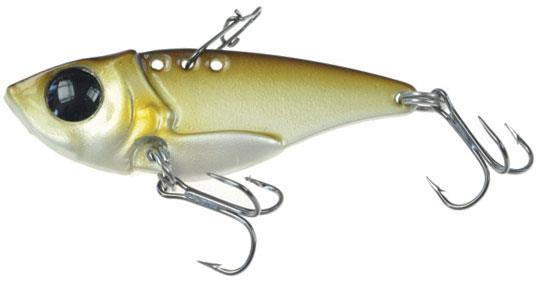
I became acquainted with Damiki Vault blade baits through reading social media posts on Facebook and Instagram. Having learned it’s a cold water, deep water fishing tactic, I knew it would excel on deep schooling smallmouth during the fall season.
The Damiki Vault is a tiny sized, but heavy weight blade-vibration bait. It’s excellent for its long casting and quick sinking abilities, ripping vibration, and it accurately mimics a variety of forage species with its unique vibrating action and realistic color patterns. It also features 3 settings for tying your line. This allows you to vary the pull point based on how deep you want to fish it, and what type of vibration you want. The closer to the head – the bigger the wobble, and the farther back – the tighter the wobble. The hooks that come with these baits suck and are trash, so best to swap out their hooks immediately before use. I’ve found the Trokar TK 300 treble hooks in #2 size to be the perfect substitute.
During the few weeks I fished these from late September thru mid October, bites were epic and fish behaved like they had never seen these baits before. A number of deep schooling and wintering smallmouth bass and walleyes were caught.
I purchased a handful of 1/2 oz. Vaults and fish them with a 7 and a half foot medium action spinning rod, size 30 Quantum Energy reel spooled with 10 and 15 lb. Cortland Masterbraid, and a 3 foot section of 10 lb. fluoro leader.
Blade baits aren’t much different from vertical jigging and rip jigging a jigging rap, snap rap, and lipless crankbait. Most of the fishing done with this lure will be vertical jigging and position fishing in depths greater than 20 ft. Lift off, and drop back to the bottom with fast, powerful rips. The vibration of the bait will do the work and fish enticing for you. Hits will be rapid and powerful, requiring instantaneous quick hook-sets in order to connect with fish. The experience is visually stimulating, as all fish and bites will be seen on your boat’s electronics, displaying everything happening beneath the boat.
Fall feeding windows are short and sweet. Catch one and you may quickly follow up with 5 more. Then the bite dissipates, only to return with a flurry of more fish a few hours later.
Schooling smallmouth often lack intelligence during the first 15 to 30 minutes at any wintering hole. The simplest forms of vertical jigging and rigging aided by your electronics will catch the most fish with ease until they condition, slow, or stop biting entirely. When exploited and vulnerable to pressure, wintering bass often move in and out from spots, only to eventually return to them again once they have recovered. Since the typical inland smallmouth lake has multiple wintering areas, jump from spot to spot, and revisit all wintering areas and waypoints to keep catching.
When you hook the big one, play them slowly and methodically up the depths to avoid barotrauma injury. Release the catch immediately, but first let them regain their bearings in the water. Livewell captivity and any displacement from wintering areas in autumn are detrimental to their winter survival. During release smallmouth will always swim back to their wintering area down below.
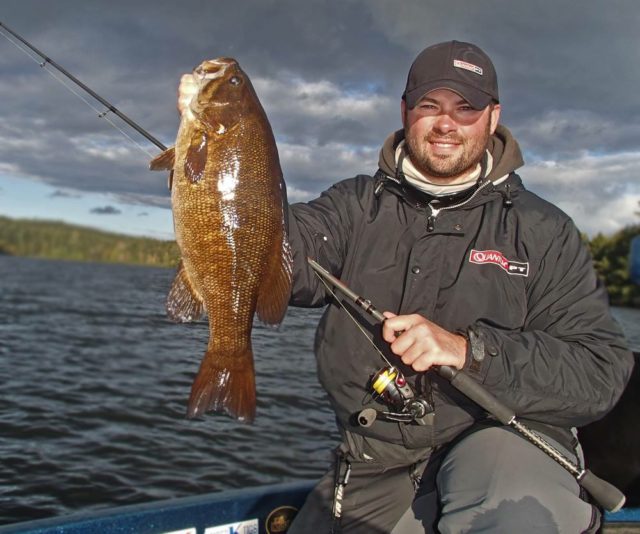
Andrew Ragas splits time between the Chicago area and Wisconsin’s Northwoods. Based in Minocqua, WI, he specializes in trophy bass fishing and offers guided trips from May thru October. While big bass is the passion, he dabbles in multi-species as well. He may be visited online at www.northwoodsbass.com


